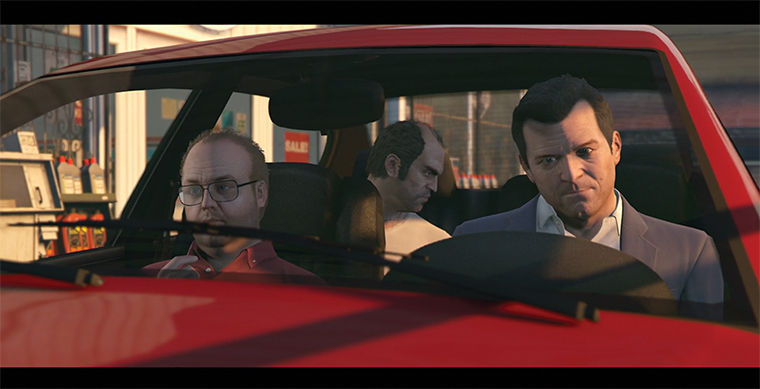‘Grand Theft Auto V’ presents new problems for series
Grand Theft Auto V
April 27, 2015
“Grand Theft Auto V,” the latest in Rockstar Games’ “Grand Theft Auto” series, has been re-released for PC platforms. Arguably the best version of the game for its adjustable graphics settings on PC, it retains features such as first-person mode. The game will leave players with no shortage of tasks, but it is ultimately a cluttered and confusing experience.
“Grand Theft Auto” started as a game with a focus on stealing cars, shooting at people and generally causing mayhem. To the layman or concerned parent, this is probably the description of every subsequent “Grand Theft Auto” release. With the jump from “Grand Theft Auto 2” to “Grand Theft Auto III,” the series took a dramatic shift not only in its perspective, but also in its approach to the core mechanics.
The jump from 2D bird’s-eye view to 3D third-person view was made possible because of the release of the PlayStation 2 game system. Because of the higher fidelity graphics and increased storage space on PS2 discs, Rockstar was able to form a coherent story to support its mechanics. No longer were players completing various tasks around a map and being encouraged to simply cause mayhem. Instead they were shooting gangsters, exploring the city and being given context for the world they explored in the game.
The focus on the story expanded as the series continued, leading “Grand Theft Auto V” to now include three protagonists.
However, the refocusing of the story has caused the original mechanics—driving, shooting and blowing things up—to lose their luster. Driving is no longer something you do to earn points. It is simply a method of getting from one mission to another. Missions primarily take place in isolated corridors full of shooting gallery-style segments that are never revisited. By trying to tackle so much, the series failed to truly innovate in any of the areas it should have. The design of the game is surprisingly similar to that of Japanese games due to its mini-game format.
The game’s creators also made the mistake of thinking the story is groundbreaking. Players can switch through three male protagonists at any time: Michael, the sensible ex-criminal bored with his family life, Franklin, the gangster who just wants to get out of the hood, and Trevor, the insane man who wants to kill and have sex with just about everything at the same time. The aspect that disappoints most, aside from stereotypical characters, is that the creators seem to have had the idea it is a satire.
This problem can be summed up by the game’s infamous torture scene. Trevor proceeds to beat someone up for information, but gains almost nothing in doing so. The scene is incredibly traumatic, hard to watch and play through and is even more visceral and uncomfortable when played in first-person mode. The impact of the scene is lost, however, when Trevor drives the injured man to the airport, ranting about how torture is completely useless as a mode of interrogation. The one time the game is successfully satirical through its mechanics, it is overdone. Every other instance of satire is used with a ham-fisted delivery that could only really appeal to those with a poor sense of humor.
For those who like open-world sandbox games, the mechanics are still sound and the inclusion of “GTA Online” alone makes “GTAV” worth picking up for a reduced price. “GTA Online” allows users to play together, bringing the game’s focus back to the mayhem of simply driving around, robbing stores and shooting other players—the game’s saving grace.
Longtime fans of the series wanting a game that exemplifies what game culture used to be will eat their hearts out. Anyone even remotely involved in the indie scene will want to give “GTAV” a pass. It is incredibly polished, has insane production value, is absolutely beautiful to look at and has some fun aspects to it, but scratching anywhere past the surface reveals that the paint is spread incredibly thin throughout this game.








